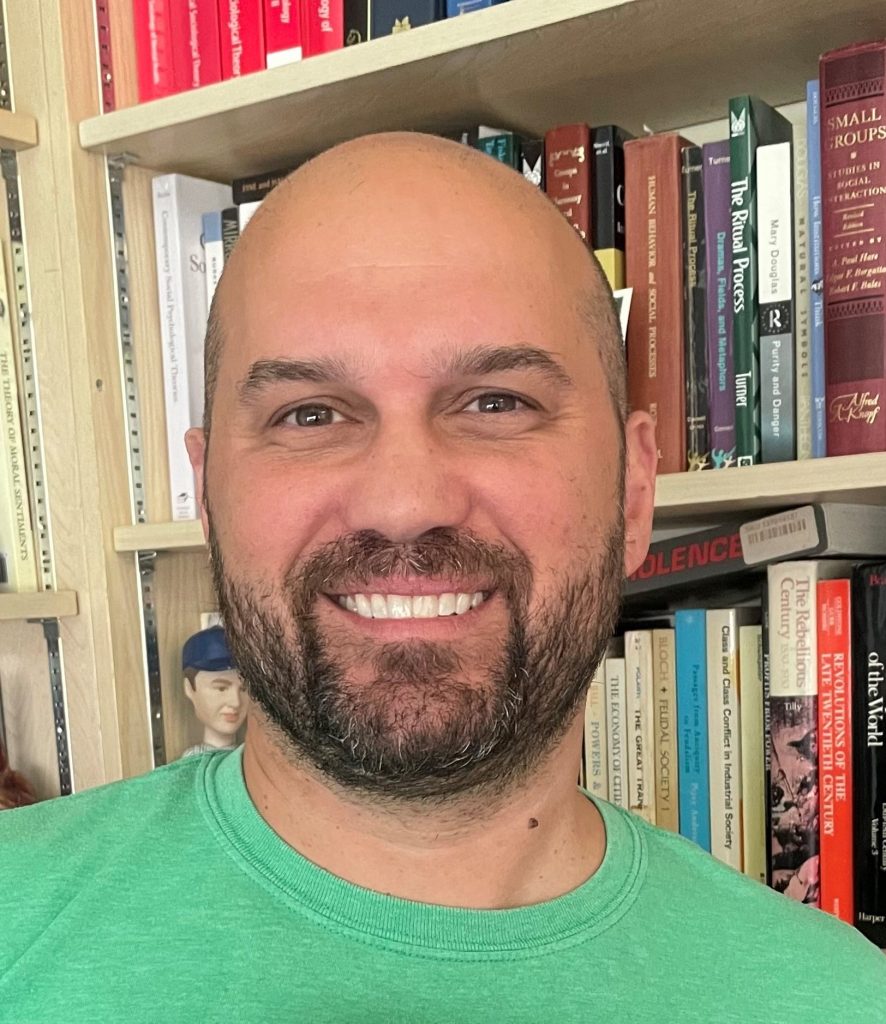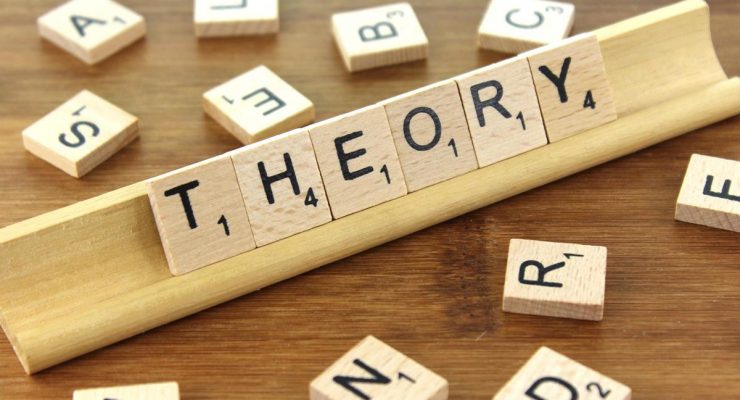Sociological theory often feels disconnected from nearly everything else we teach in undergraduate courses. This is not totally an accident, but it is unfortunate. Why? Because sociological theory is the backbone of the discipline, and of the sociological imagination you hear so much about. As a scholar who studies adolescent suicide and youth suicide clusters in high schools, theory has been indispensable to all phases of the research process, especially translating findings into easily readable and actionable deliverables. Before I say a bit more about how we might rethink teaching theory,it’s worth reflecting on why sociological theory should be taught differently.
I would start with a simple qualifying statement. A lot of classical theory may not feel connected to the reader’s lived reality because, well, it doesn’t. When I was an undergrad and then a grad student and now a professor teaching that course, I struggled and still struggle with making some of it relevant. In some cases, it is very macro, or the theory covers a large amount of time and geographic space. Marx’s theories, for instance, are broad-stroke theories of human societies that stretch back quite far, but our brains are designed to make sense of time spans that fit lived experiences more readily. Often, what is theory and what is philosophy, ideology, or pseudoscience is not distinguishable because classical theory emerged without peer-reviewed publishing standards. This makes wading through dense texts challenging and, admittedly, boring.
That said, when my professors extracted the basic theoretical ideas and helped explain them with contemporary examples, I saw what theory could do. Theory provides us with the language for situating the self, or in C. Wright Mills’ terms, our biography within the historical, political, economic, and cultural context that enables and constrains how we feel, think, and act every day. It pushes us to not take for granted that what we know or how we interpret an event or issue or person’s behavior is “right.” Like all sciences, a good theory course should teach us that the more we learn, the less we actually know. It should motivate us to want to understand more, and to develop better tools for studying the things that interest us to create better explanations; explanations that can be used to shape policies, influence political or economic actors, or simply improve discussions we have with strangers, friends, and family.
We should cultivate more empathy because of theory. Indeed, the most public form of public sociology is simply acting towards others around us in ways that recognize the systemic sources of difference, the need for sympathy and empathy, and the effort to not create more conflict but find ways to help others recognize these differences are normal, healthy, and do not have to stymie civility and kindness.
So, what would a more practical, fresh approach to teaching classical sociological theory look like? I offer two related possibilities.
- The biggest dilemma, in my opinion, with classical theory stems from the vagueness surrounding the term “classical.” In the most literal sense, we are talking about the earliest sociological thinkers compared to contemporary theorists. But, what makes someone contemporary? Should they be alive? Should they have been publishing in my lifetime? My students’ lifetime? What should we do with the thinkers theorizing from 1930-1970? Should we simply abandon them because they do not fit the heuristic?
An alternative way to think of classical theory is the emergence of certain enduring kernels of sociological inquiry. For instance, Durkheim’s Elementary Forms of Religious Life can be taught many different ways, but its most enduring insight is that emotions are the cement with which relationships, groups, and communities form and are sustained. The mechanism is repeated, stereotyped gatherings that, in turn, draw participants’ attention and emotional arousal to a central focus—an activity, a conversation, or a social object (e.g., bands or political speakers). Because this feeling is felt to be outside of our body and mind, we ascribe the source to a “third-party”: the group. Every time we gather, we feel the group.
It would be easy to draw a few pages here and there from this text that highlight the imagery Durkheim employs, but couple it with more accessible, theoretically developed, and empirically grounded texts. Goffman’s Interaction Rituals, Collins’ Interaction Ritual Chains, and Lawler’s Affect Theory of Social Exchange all are indebted to this insight and all show the evolution of theoretical ideas from rough, informal premises to solid propositions. Simmel’s relational work can be brought into conversation with network theory; Weber’s work on authority and power with the myriad theories of power today; the notion of status groups found in Veblen and Weber paired with reference group theory, status expectations state theory, small groups research, and so on.
In my experience, students enjoy this far more than being mired in Marx’s German Ideology or the linguistic twists and turns of Durkheim’s Division of Labor. They lose nothing, as they are still confronted by some of the original material. The distracting misogyny and ethnocentrism one would expect from 19th century white, male writers are tossed in the trash bin for good, while central animating ideas are recovered. It has further consequences, for students, of (a) connecting 200-year-old ideas with contemporary sociological research and (b) embedding theory, as a subfield and cornerstone of a discipline, into the rest of the courses they will take for the major. That Durkheim or Weber or Du Bois’ ideas remain salient to people doing actual research and extending theories in legible ways makes the discipline feel fresh, forward-thinking, and growing rather than stale, mired in the past, and hermetically sealed.
- Leaning into contemporary readings has a sort of meta-effect on course design: it forces the instructor to think hard about what ideas endure and which are artifacts of the antiquated milieus in which they were written. For instance, Durkheim’s thesis in the Elementary Forms has found strong empirical support in sociology, anthropology, the ethnographic record, cognitive science, and neuroscience. This signals “sociological principle.” That Durkheim hedged on his thesis in the Division of Labor and, eventually, disputed it in the final section of the book suggests shaky ground for inclusion in a course.
Imagine, for a second, that a course was built up from basic problems or questions that are partially answered through principles that continue to inform how we think, study, and write about them. Durkheim’s central problem was integration, or how do diverse groups or communities form and sustain a sense of we-ness? This question is no less important today than in 1897 or 1532 or at the rise of the earliest states some 5,000 years ago. Marx, Weber, and Durkheim—among others, also felt that the problem of regulation was essential to understanding social organization and change. Communities face pressures to coordinate and control members, especially as they get larger, denser, and more heterogeneous. How do they do this, what are the consequences, and how do solutions often lead to change? The strength of this approach is that these questions work at most scales. I can explain integration and regulation by talking about the growth of a family. Two people fall in love and get married. What happens when they have a child? A second child? A third child? A parent comes to live with them? What are the challenges they face with growth in “population” and diversity? Where do the necessary resources come from? Who decides who gets what and how much? These are fundamental sociological questions that classical theorists and contemporary theorists continue to ask and answer, even if they often focus on “societies” or “organizations” and not the immediate social worlds we all are familiar with.

Dr. Seth Abrutyn is a Professor of Sociology at the University of British Columbia. Abrutyn specializes in youth suicide and is also a general sociologist whose research rests at the intersection of mental health, emotions, social psychology, and culture, and which has won several national awards. His overarching goals as a social scientist are to merge sociological theory with the public imagination in hopes of making accessible sociological tools in the service of solving social problems.


Comments